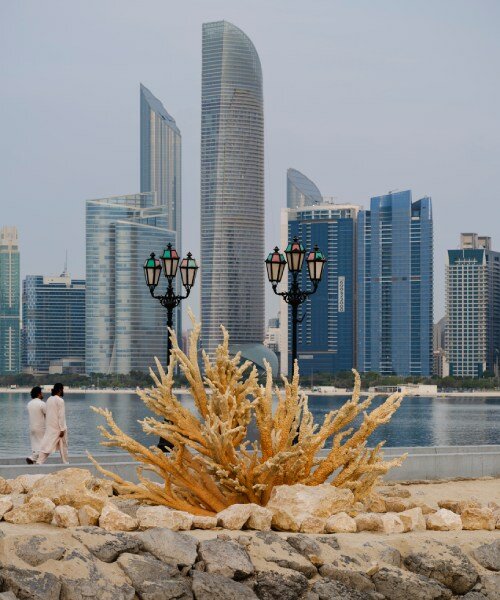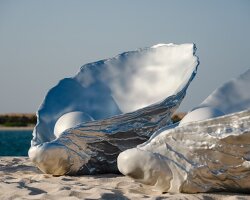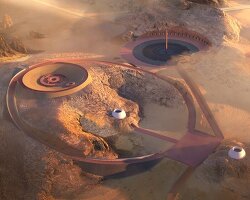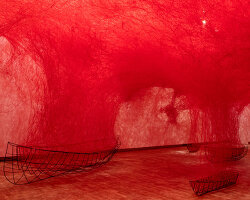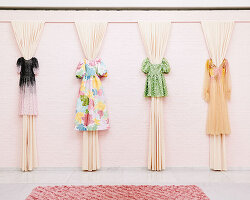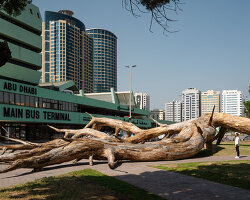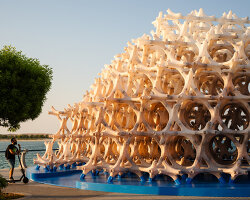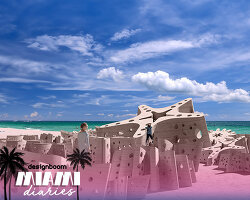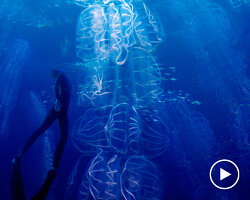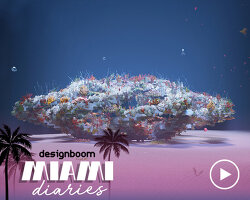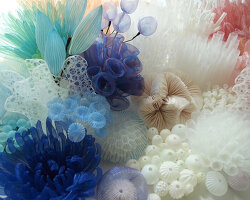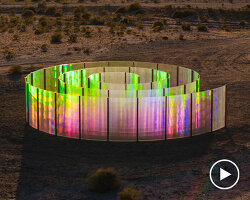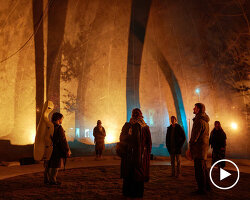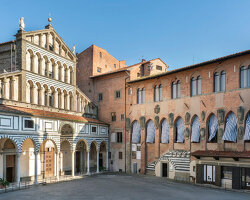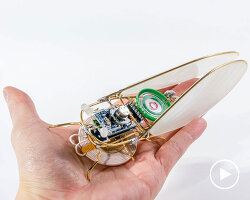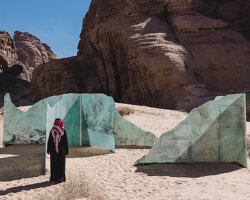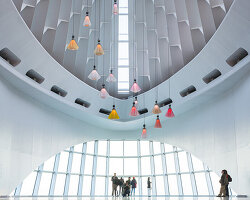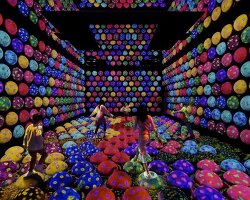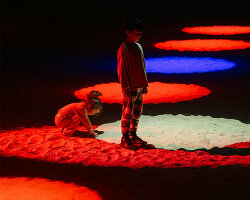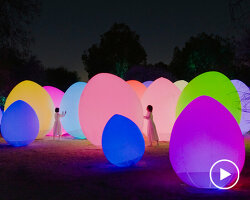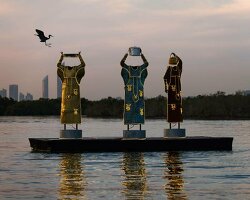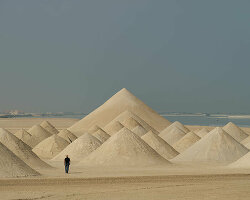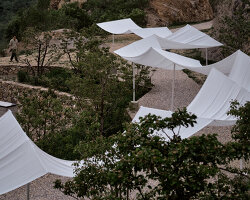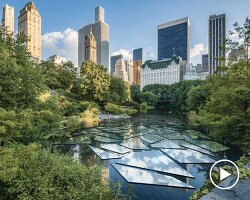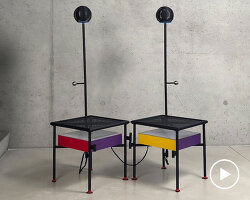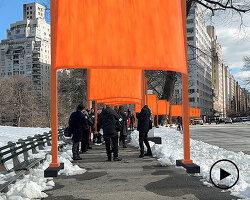coral alchemy sheds light on fragile ecosystems at manar
Overlooking the Abu Dhabi Corniche, a vast replica of a species of coral endemic to the emirate emerges from the sand, shedding light on the catastrophic human impacts on the fragile ecosystems under the sea. Coral Alchemy (Acropora Grove), the most recent iteration in Shezad Dawood’s ongoing ecological art series, is unveiled as part of the inaugural edition of the Manar public art exhibition that illuminates the city. The site-specific installation is inspired by the forms, evolution, and ongoing destruction of the native Acropora Downingi species that is currently facing dire stress impacts due to warming waters, and seeks to foster public interactivity and inspire a conscience-awakening appreciation for coral forms. Among the collection of 35 luminous spectacles of Manar, some of which are visible across the city while others can be seen from space, the interdisciplinary artist’s approach to the exhibition’s theme of ‘Grounding Light’ takes a more subdued approach. It inverts traditional perceptions of light art by engaging light and heat in a subtly dynamic interplay throughout the day, while at night, a soft glow casts a visceral spotlight on its form, urging visitors to confront the reality of perishing marine life. ‘Does a light work always have to be a night work?’ questions Shezad Dawood.
For the most experimental works of his Coral Alchemy Series, Dawood sets forth a mimicry of nature using machine learning, in turn nodding to the continuum of geometry between the natural world and technology. ‘There is an uncanny parallel between code and nature in that they both use geometry as their building blocks, which also has an added resonance in the Gulf as so much Islamic art is based on geometry,’ he shares with designboom. He developed an AI pathway that replicates the natural growth patterns of the Acropora species in their natural environment while a bespoke thermochromatic paint finish renders the installation a warning symbol for those passersby about the invisible destruction under the water. As ambient temperatures increase, the coral’s surface lightens from a reddish-orange to white, emulating the hues of perishing corals. ‘It almost acts as an accidental barometer,’ he adds. On the occasion of Manar Abu Dhabi, designboom had the opportunity to experience Coral Alchemy (Acropora Downingi) in person, and speak to the artist himself to learn more about his processes and intentions. Read on to learn more about the project.
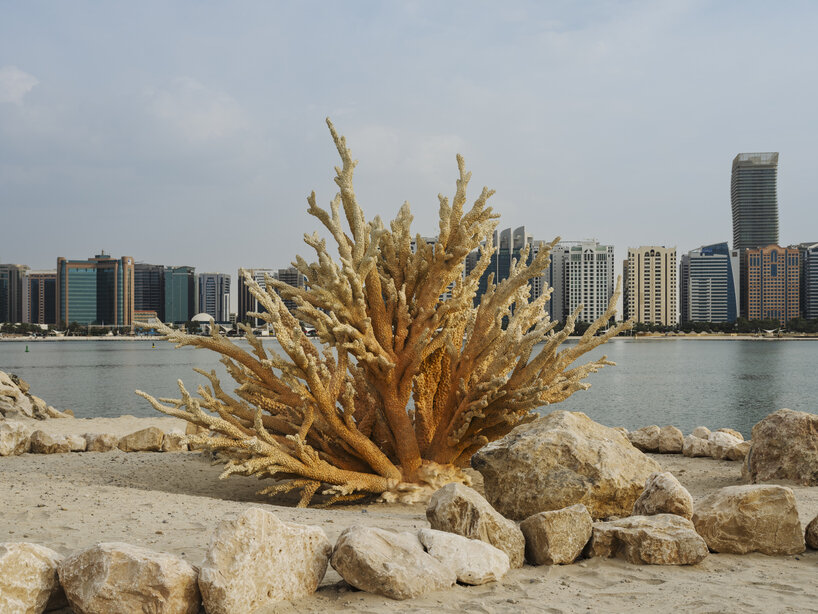
all images by Lance Gerber
in conversation with shezad dawood
designboom (DB): Can you introduce us to your Coral Alchemy series, and tell us about how Acropora Downingi reflects the unique environmental context of Abu Dhabi?
Shezad Dawood (SD): I’d had the idea for the Coral Alchemy series for a long time through my ongoing conversations with professor Madeleine van Oppen around coral hybridization and accelerated evolution as ways to mitigate human impacts on reef ecosystems.
I’m very passionate about oceans as they are (along with other key biomes) the beating heart of the planet, as well as a major source of the unknown and the undiscovered. I often think about how to bring what exists beneath up to the surface, so as to make the invisible landscape that lies beneath the surface alive to more people.
With the use of thermochromic paint, I’m able to make each work in the series bespoke to its local ecosystem and climate. For Abu Dhabi I was grateful to be able to consult with Noura Al Mansouri of the Environment Agency on species under stress in the immediate reef ecosystem around Island, and by chance it was one of my favorite species: Acropora Downingi, whose complex branch system encourages — in a healthy reef — a thriving biodiversity.
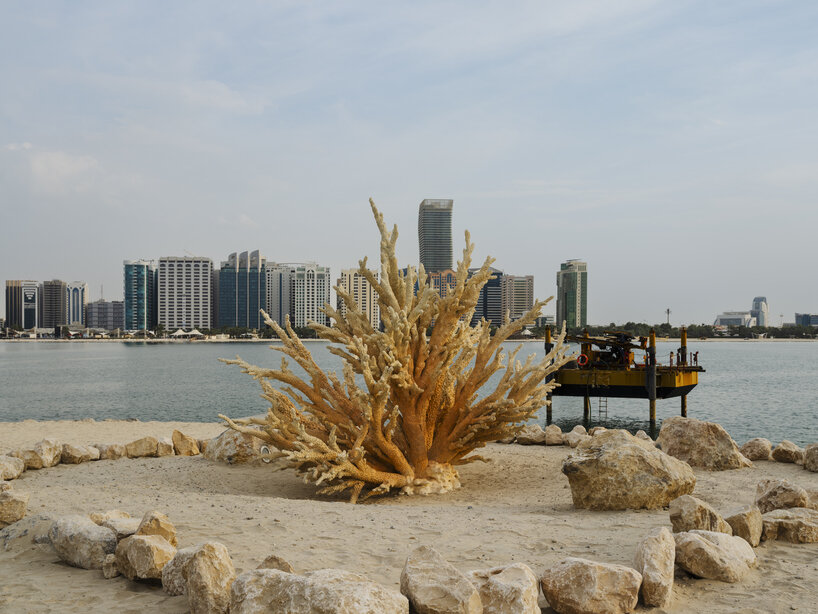
Shezad Dawood’s Coral Alchemy (Acropora Grove) at Manar Abu Dhabi 2023
DB: While most installations for Manar are luminous spectacles, Coral Alchemy takes a more subdued approach. How does it respond to the exhibition’s theme of ‘Grounding Light’? And how does it contribute to the initiative’s goal for enhancing community engagement?
SD: It was an interesting conversation with Reem Fadda and Alia Zaal Sultan Lootah where we discussed having a work that could respond to light (and heat) in the daytime, rather than the more typical luminous night-time spectacle. I think there was also an aspect to having a natural form seemingly growing out of the sand by the water.
This led to a lot of impromptu conversations with the public during the installation period and beyond, where sometimes large groups of children would stop to talk to me about the work, and I could start to explain a little bit about their reef ecosystems which they had little experience of, and yet are a key natural resource. We’re also working on a number of conversations to bring dialogues around the importance of reef conservation and protection to the public in Abu Dhabi.
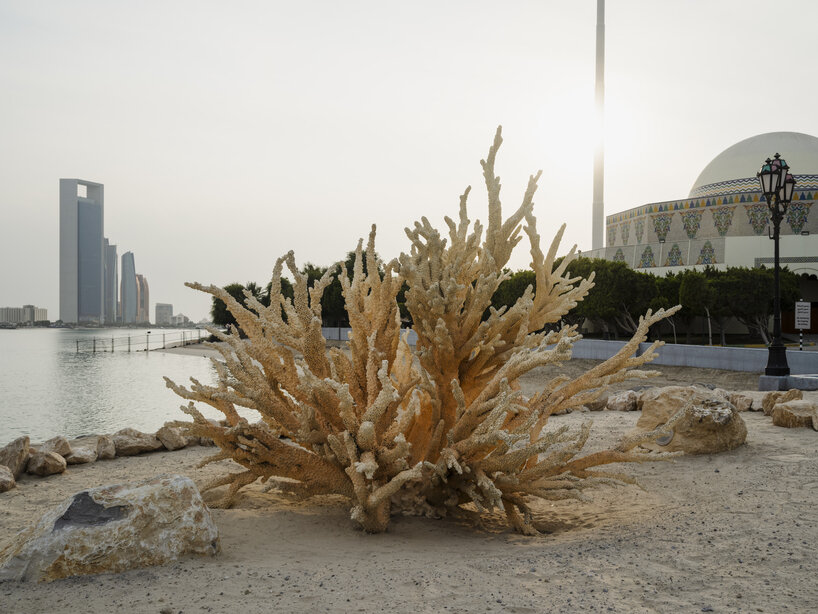
a vast replica of a species of coral endemic to the emirate emerges from the sand
DB: How did your collaboration with marine scientist Noura Al Mansouri help shape the project?
SD: Noura really helped in selecting the Acropora species we chose, but also in providing information on both growth patterns of the Acropora and the features related to stress impacts in the species, such as bleaching and fracturing.
DB: You pose an interesting idea of using technology to mimic nature. How did you work with AI and how does your use of thermochromatic paint tie in?
SD: I became very interested in using AI to mimic natural growth patterns [of Acropora], which I hadn’t done with previous examples in the series. I’m always keen to continually experiment and push the form of the work. There is an uncanny parallel between code and nature in that they both use geometry as their building blocks, which also has an added resonance in the Gulf as so much Islamic art is based on geometry.
In terms of the thermochromic paint, I find it helps bring home our human impacts on fragile ecosystems such as coral reefs. It’s easy to ignore these gradual processes when they’re safely out of sight beneath the waves, but if you’re faced with an oversized coral that is bleaching daily as the temperature climbs above 30 degrees centigrade, then it can’t help but have a visceral impact on your understanding of the need to reduce marine warming.
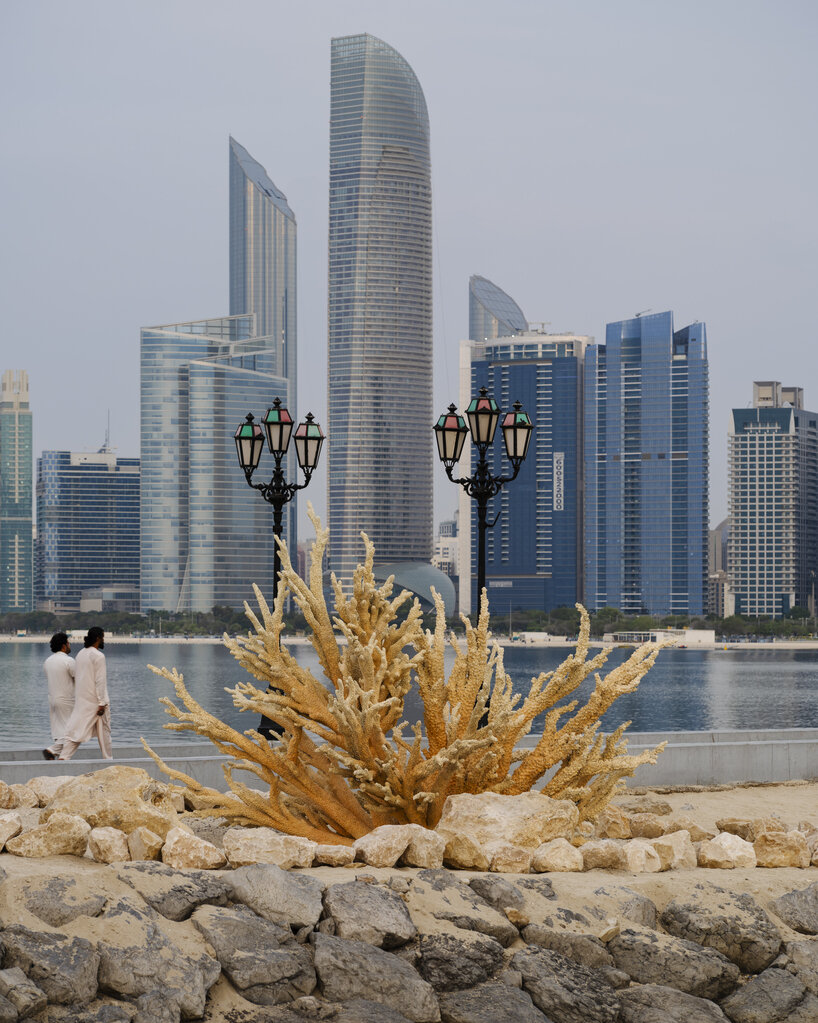
the artwork sheds light on the catastrophic human impacts on the fragile ecosystems under the sea
DB: In your opening talk at Manar, you mentioned that you wanted to bring what was under the water above ground, to make the invisible visible. How does Coral Alchemy spotlight the human impacts on fragile reef ecosystems? Do you envision the project’s impact shaping attitudes towards marine heritage and responsible, eco-friendly lifestyles in any way?
SD: I hope that visceral impacts mentioned above mean that people go away from the work with a more embodied understanding of our impacts on nature, and a greater awareness of the responsibility we have to prevent further reef degradation. Reefs are not just homes to biodiversity but also act as natural barriers to extreme tidal events such as tsunamis and therefore play an outside role in protecting coastal communities.
My studio — via our non-profit arm Leviathan: Human and Marine Ecology — also puts funding back into research into coral protection and conservation via a grant giving scheme we set up with the Australian Institute of Marine Science.
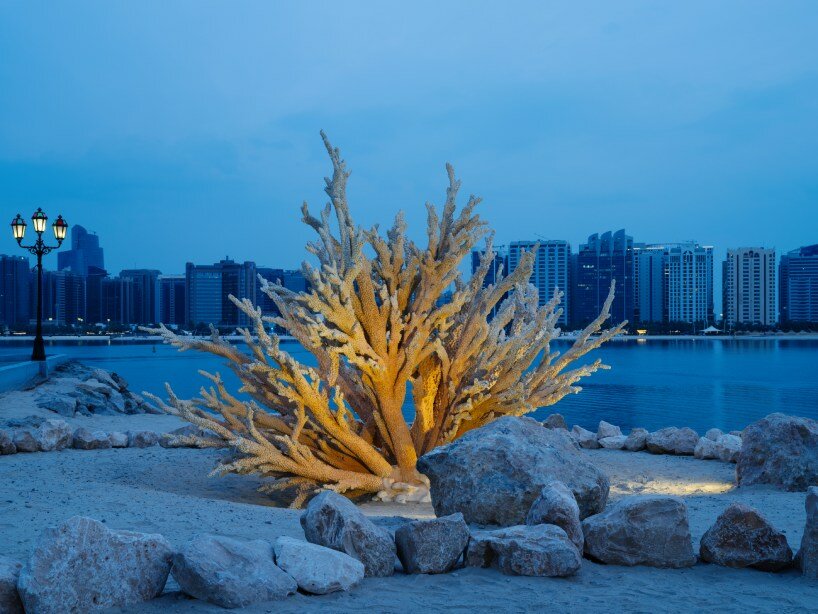
at night, a soft glow casts a visceral spotlight on its form, urging visitors to confront the reality of perishing marine life
DB: Beyond this project, what role do you believe art and architecture can/do play in the ongoing discourse about environmental issues, climate change, and our relationship with nature and our land?
SD: I think there’s definitely a way in which artists and architects can collaborate in an interdisciplinary way with climate scientists and marine biologists to use visual means to highlight and educate around these issues, and where possible, to help drive funding and resources towards further conservation efforts and legislative protections.
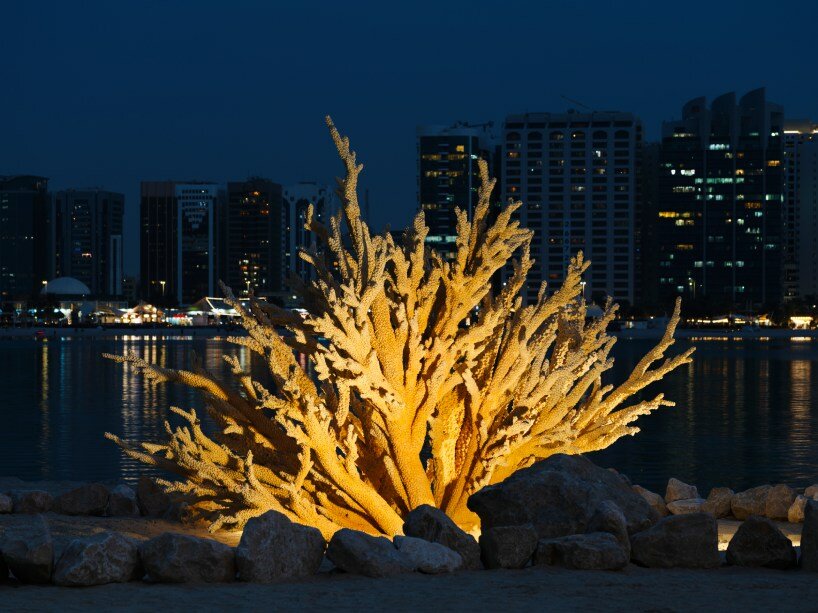
Shezad Dawood developed an AI pathway that replicates the natural growth patterns of the Acropora species
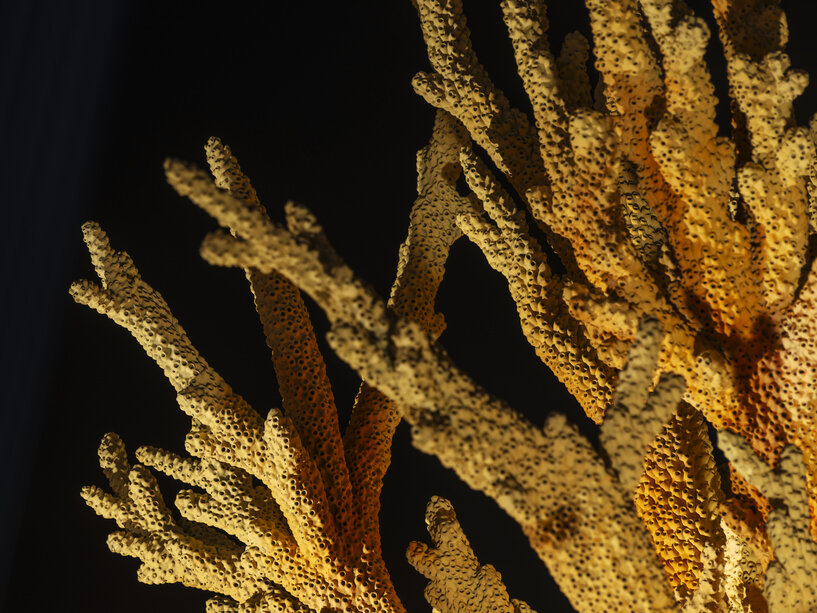
a bespoke thermochromatic paint finish allows the artwork to interact with heat and light throughout the day
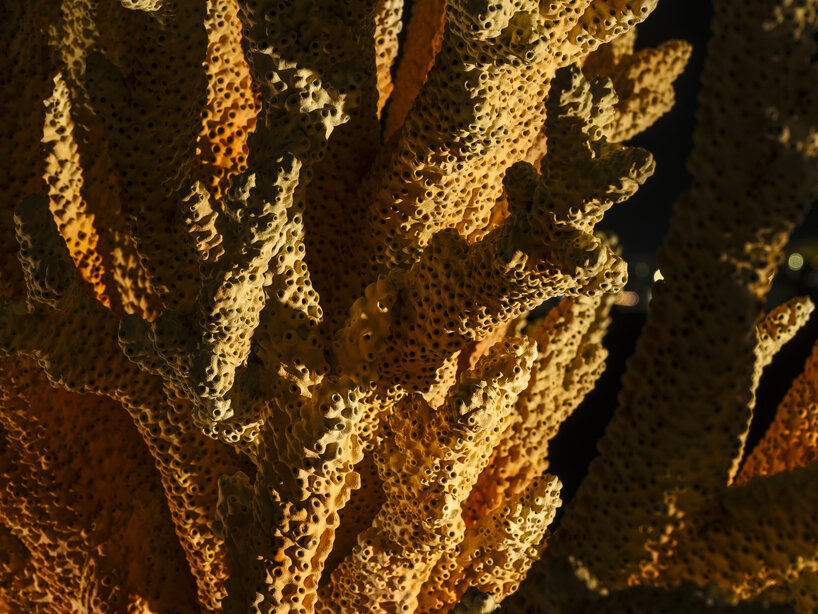
as temperatures rise, the surface lightens to echo the effects of coral bleaching
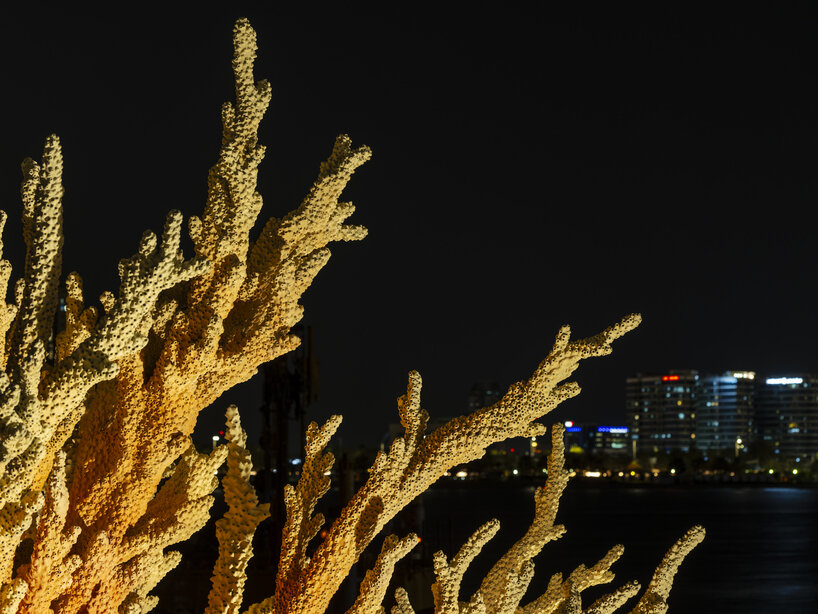
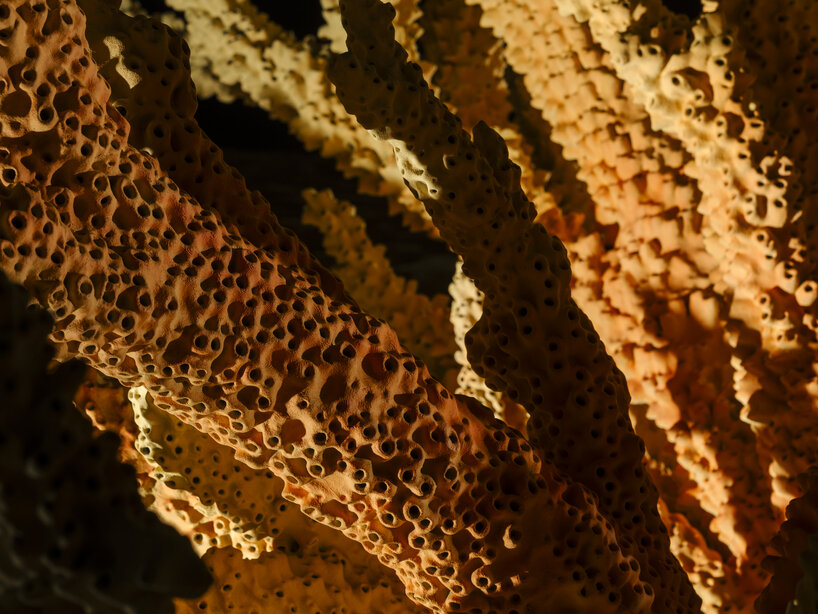
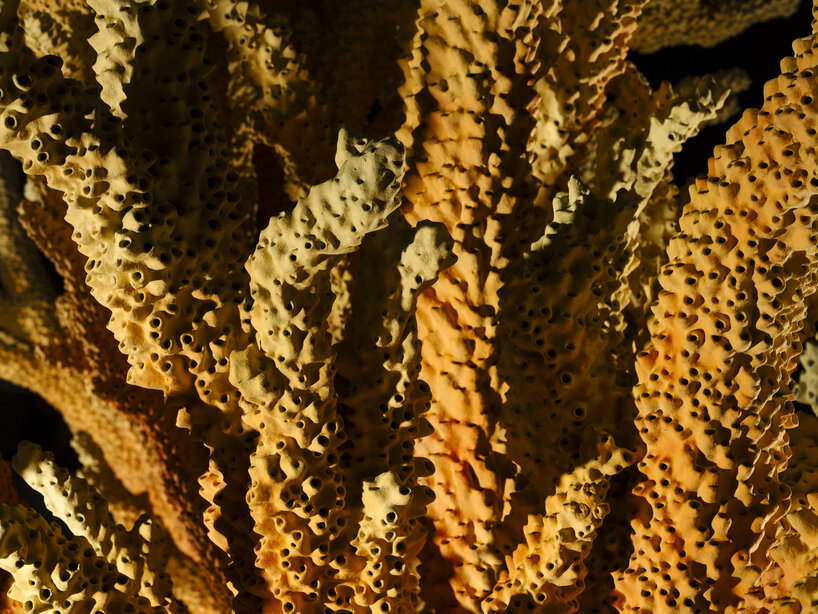
project info:
name: Coral Alchemy (Acropora Grove)
artist: Shezad Dawood
location: Abu Dhabi, United Arab Emirates
exhibition: Manar Abu Dhabi
photography: © Lance Gerber | @lance.gerber
